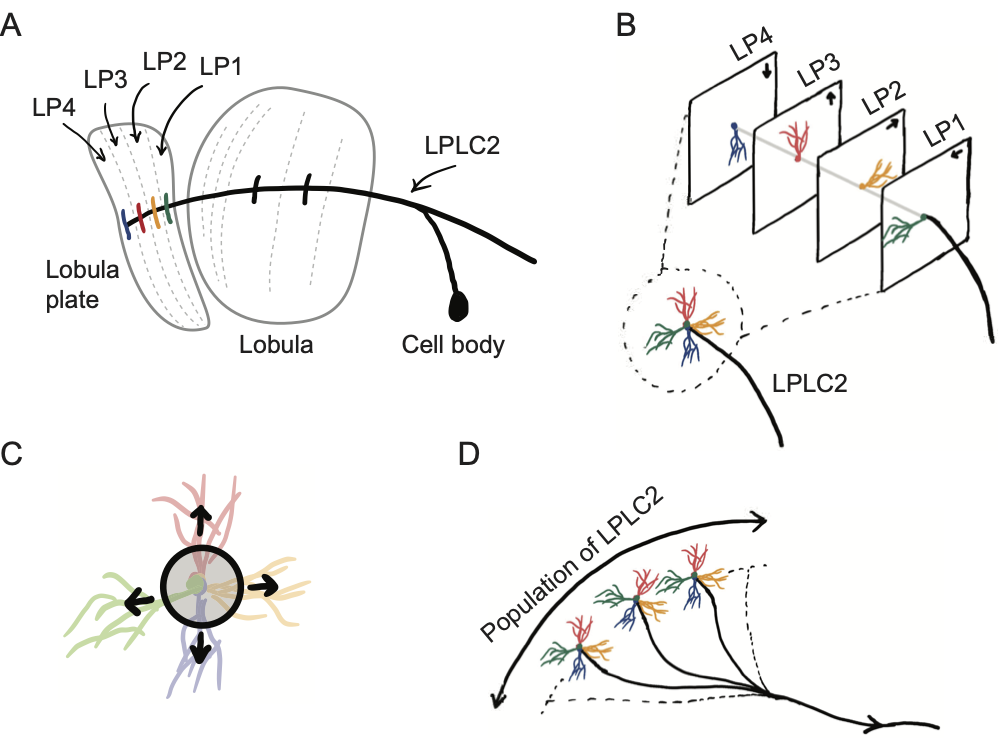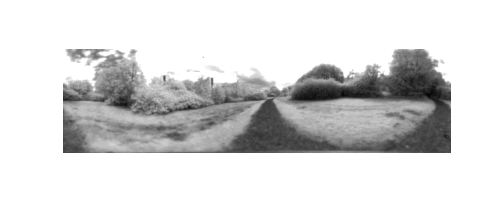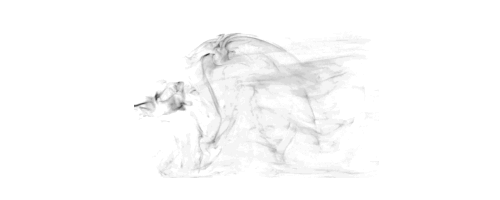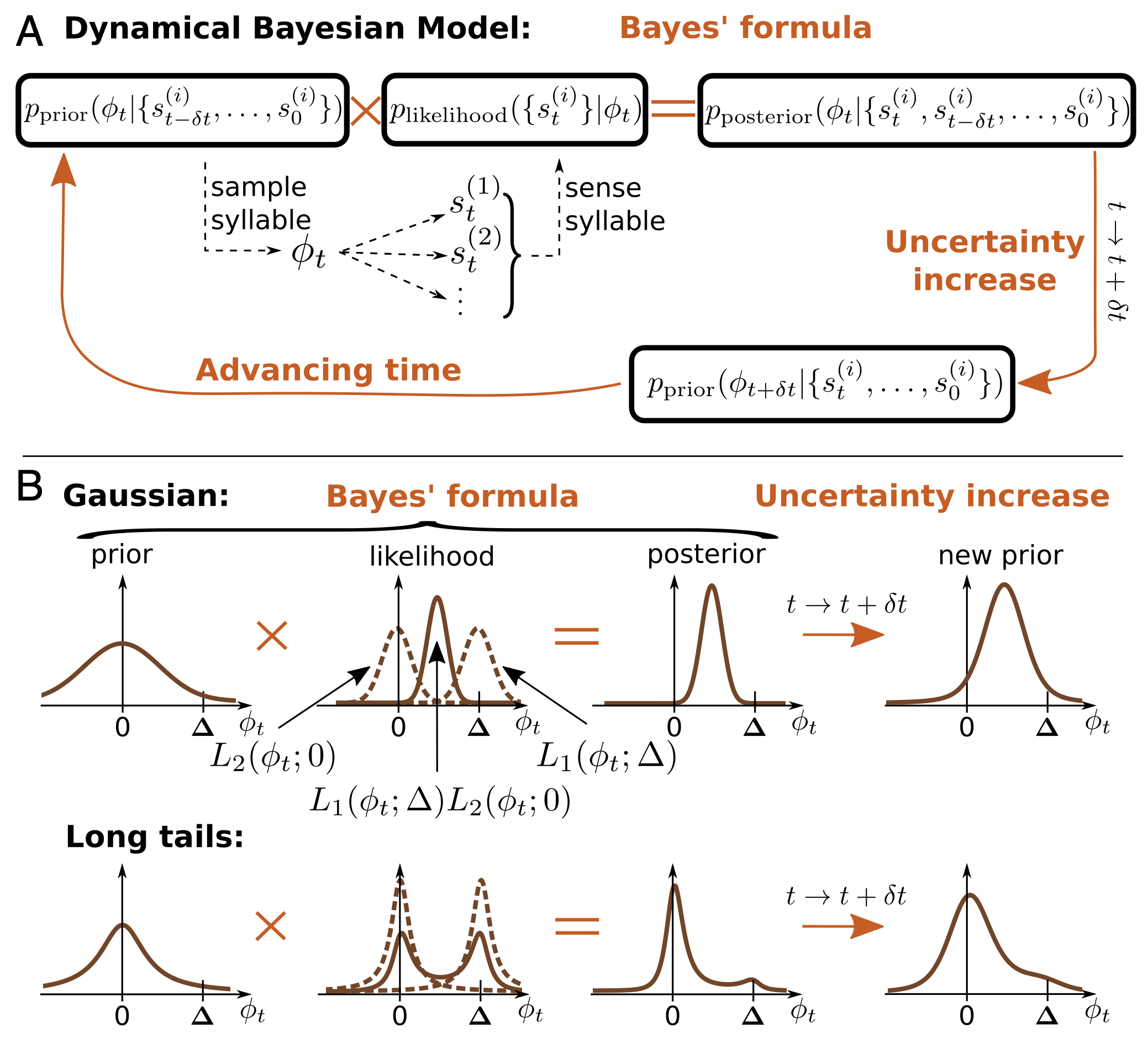
Looming detection
When crossing a road, you want to make sure that there is no car approaching. How could an animal’s visual system detect looming events? A specific neural circuit in the fly’s visual pathway provides a solution. This neural circuit is comprised of roughly 200 neurons, called LPLC2 neurons. The dendrites of an LPLC2 neuron have four branches, with each branch extend from the cell center outwardly toward one of the four cardinal directions in space, left, right, up and down. This elegant structure emerges automatically when a neural network model is trained to perform simple looming detection tasks.


